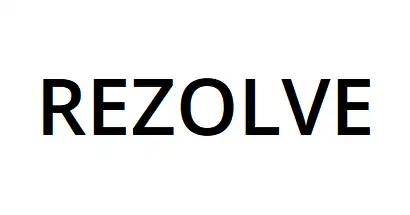Strategies for Successful Collaborations
Identifying the Right Partner
Choosing the right partner is pivotal to the success of any collaboration. It's essential to select potential partners whose brand values, goals, and audience complement your own. Start by clearly defining objectives — whether it’s extending visibility, enhancing product offerings, or supporting co marketing efforts that strengthen perception. Evaluate collaboration partners based on their reputation, market position, and alignment with your brand ethos. It’s also crucial to assess their previous project history to gauge reliability and effectiveness as a partner. Conducting thorough research and due diligence will help mitigate risks and ensure a mutually beneficial relationship. Additionally, consider the partner’s target audience and how it overlaps with or complements your own. The best brand collaborations deliver value to both parties, showcasing the innovative products that brands created while allowing each to leverage the other’s strengths. Ultimately, the right partner will not only share your vision but can also enhance the impact of the product collaboration.
Setting Clear Objectives
Defining clear objectives is a fundamental step in ensuring the success of any alliance. Before embarking on a partnership, both parties must align on what they hope to achieve, whether it be expanding visibility, driving sales, enhancing product innovation, or improving brand reputation. Clear objectives among collaboration partners provide a framework for effective decision-making and strategic planning. They help in setting realistic expectations and measuring progress against agreed benchmarks. Moreover, well-defined goals can foster transparency and trust between potential partners, as each can clearly understand the shared responsibilities and desired outcomes of a product collaboration. It’s important to regularly revisit and, if necessary, adjust these objectives as projects progress to ensure they remain relevant and attainable. Open communication about goals, much like a group project, also aids in resolving conflicts, ensuring that both companies remain focused on achieving results. Thus, setting clear objectives is key to steering the best brand collaborations and ensuring long-term success.
Effective Communication Practices
Effective communication is the cornerstone of any successful brand collaboration. Establishing open and transparent communication channels between brands collaborate their partners is crucial for aligning strategies and achieving mutual goals. Regular meetings and updates can help ensure that both parties are on the same page and can address any issues in a timely manner, especially when they plan to create a limited edition item . Creating content together, such as joint campaigns or social media posts, can further strengthen the collaboration and help both brands reach wider audiences. It’s important to designate points of contact within each organization to facilitate smooth communication and decision-making, creating a stronger connection between partners . Additionally, clear documentation of agreements, plans, and responsibilities can prevent misunderstandings and provide a reference point for both parties. Utilizing collaborative tools, such as shared project management software, can further enhance communication efficiency and keep all stakeholders informed. Moreover, fostering a culture of openness encourages partners to share ideas, feedback, and concerns, which can lead to innovative solutions and stronger collaboration. Ultimately, effective communication practices among two brands re about building trust and ensuring that all aspects of the partnership are managed collaboratively and effectively.
Challenges and Solutions
Handling Creative Differences
Creative differences are a common challenge in collaborations, yet they can also be a source of innovation if managed properly. It’s essential for partners to establish a process for resolving differences constructively, much like a group project . This begins with fostering an environment where all ideas are welcomed and respected, allowing for open dialogue and brainstorming, much like the innovative brands created through collaboration . When disagreements arise, focus on the shared objectives and brand collaboration examples as guiding principles to steer discussions. Compromise and flexibility are key; both parties should be willing to adapt and consider alternative solutions that benefit the partnership. Setting up a structured decision-making framework can also help in navigating disputes by providing clear criteria for evaluating ideas. Involving a neutral third party, such as a mediator, can offer an unbiased perspective and facilitate resolution when needed. Ultimately, handling creative differences with a collaborative spirit encourages effective collaborating and can lead to innovative outcomes that strengthen the relationship.
Managing Shared Responsibilities
Effectively managing shared responsibilities is crucial in any collaboration, as it ensures that both parties contribute equitably and that the partnership progresses smoothly. To achieve this, it is vital to define roles and responsibilities clearly at the onset of the project, ensuring that each partner leverages their established customer base . This can be done by outlining each company’s strengths and how they can best support the shared goals, perhaps focusing on a new apparel collection . Creating a detailed project plan with specific tasks, deadlines, and accountability measures can help in tracking progress and ensuring commitments are met. Regular check-ins and updates are necessary to monitor the status of responsibilities when two brands collaborate and resolve discrepancies quickly. It is also beneficial to establish a mechanism for addressing failures to meet responsibilities with other brands , which may include renegotiating terms or redistributing tasks when needed. By proactively managing these processes and encouraging ongoing collaborating, businesses can reduce conflict and remain focused on driving sales while achieving the objectives of their partnership.
Measuring Success and Impact
Measuring the success and impact of a brand collaboration is essential to understand its effectiveness and to inform future strategies. This involves setting quantifiable metrics at the beginning of the partnership, which could include sales growth, brand awareness, or customer engagement levels. It is also important to track how well the collaboration helps to sell products, as this is a key measure of success for many brands. Regularly tracking these metrics helps both parties evaluate whether the collaboration is meeting its objectives. Additionally, qualitative assessments, such as customer feedback and media coverage next brand collaboration, can provide insights into the partnership’s impact on brand perception. It’s important to conduct a comprehensive review at the conclusion of the collaboration to assess both successes and areas for improvement. This analysis should consider not only the immediate outcomes but also the long-term benefits that have emerged as a result of the partnership. Sharing these findings openly between partners can foster a deeper understanding and highlight the value of the collaboration, paving the way for future joint ventures.
Future of Brand Collaborations
Trends Shaping Collaborations
The landscape of collaborations is evolving, shaped by several emerging trends. One significant trend is the growing emphasis on sustainability and social responsibility. Consumers are increasingly aware of environmental and ethical concerns, encouraging companies to form alliances that highlight their commitment to these causes. Another major shift is the integration of technology, with campaigns using augmented reality and artificial intelligence to enhance customer experiences. Influencer partnerships are also reshaping the market, as brands work with social media personalities to reach niche audiences with authentic and relatable content. Cross-industry alliances are expanding too, allowing companies to innovate by combining expertise from very different sectors, sometimes launching a limited edition collection or exclusive line to spark interest. Finally, data-driven approaches are gaining traction, with analytics used to personalize offerings, optimize campaign strategies, and increase sales. Together, these trends point to a future where collaborations create value not only for companies but also for customers and communities.
Innovations in Partnership Models
As the landscape of partnerships evolves, innovative models are emerging to meet changing demands. One key development is the rise of flexible collaborations, where brands engage in short-term, project-based work that allows agility and quick adaptation to trends. This model is especially attractive in fast-paced industries like technology and fashion, where rapid iteration is vital. Another emerging approach is the collaborative ecosystem, where multiple players from different sectors join forces to deliver a holistic consumer experience — for example, a lifestyle platform that integrates fitness, nutrition, and wellness. Brands are also experimenting with co-creation, involving consumers directly in developing new offerings through crowdsourcing initiatives. In addition, virtual collaborations supported by digital tools are growing, enabling companies to partner globally without geographical barriers. These models highlight a shift toward more dynamic and integrated approaches, often including strategies to launch a limited edition collection that generates demand and reinforces sales momentum. Together, they offer fresh opportunities for growth, innovation, and differentiation.
Opportunities for Small Businesses
The future of partnerships presents numerous opportunities for small businesses. By teaming up with larger organizations, they can gain access to broader distribution networks and marketing resources that might otherwise remain out of reach. This significantly enhances visibility through co branding partnerships and strengthens credibility in the marketplace. Joint initiatives also allow smaller players to share expertise and innovate, combining agility and creativity with the established capabilities of larger allies. The growing emphasis on niche audiences and personalized experiences is also opening doors for two or more businesses to collaborate on unique offerings tailored to specific customer needs. Such approaches can differentiate small brands in competitive sectors and help build an established customer base by aligning with the right target market . In addition, digital platforms have lowered barriers, enabling global partnerships without heavy financial investment. By leveraging these trends, small businesses can accelerate growth, explore ongoing partnership opportunities, and enhance their competitive edge in an interconnected market by better understanding their target audience .
Inroduction to Brand Collaboration
Brand collaboration is a powerful strategy where two or more businesses join forces to create results greater than the sum of their parts. By forming a partnership, companies can combine unique strengths, resources, and audiences to develop innovative products, services, or experiences that resonate with both existing and prospective customers. This approach not only helps to drive sales and brand awareness but also allows access to the established customer base of other partners to sell products, maximizing outreach. reaching target groups that may have previously been out of reach.
Effective collaborations begin with a deep understanding of your target audience and awareness of the other brands they admire. Identifying these connections uncovers opportunities for meaningful partnership. Careful strategic planning ensures that the initiative aligns with brand values and marketing objectives, creating benefits for both sides.
Examining examples such as limited edition collections or well-known campaigns from Red Bull, North Face, or Liquid Death shows how creative ideas and a shared vision can lead to memorable outcomes. These cases highlight that when done with purpose, the next brand collaboration can feature a unique logo to expand reach.
Examples of Successful Collaborations
Some of the most memorable and effective brand collaborations have not only captured public attention but also delivered impressive results in terms of sales and market expansion. For example, when Van Leeuwen teamed up with Kraft Macaroni & Cheese, they created a limited edition ice cream flavor that quickly became a viral sensation. This unexpected partnership generated significant buzz on social media and led to the creation of a unique collection among collaboration partners , attracting new consumers and selling out rapidly.
Another standout example is the partnership between KFC and Lifetime, which resulted in a quirky 15-minute mini-movie starring the iconic Colonel Sanders. This collaboration blended fast food with entertainment, demonstrating how brands collaborate to reach new audiences and spark widespread online conversation. The campaign, much like those from red bull, demonstrated how two brands from different industries can come together to create content that resonates with consumers and elevates brand recognition.
In the fast food world, the collaboration between Doritos and Taco Bell led to the creation of the Doritos Locos Taco—a product that quickly became a fan favorite and drove a surge in sales for both brands. By combining the flavors and loyal customer bases of two established brands, this partnership, including the popular red bull brand, successfully tapped into new consumer segments.
These examples highlight how brand collaborations can be a powerful tool for generating excitement, reaching new consumers, and boosting sales. By thinking creatively and partnering with complementary brands, businesses can create unique offerings that stand out in the market and leave a lasting impression on their target audience.
























